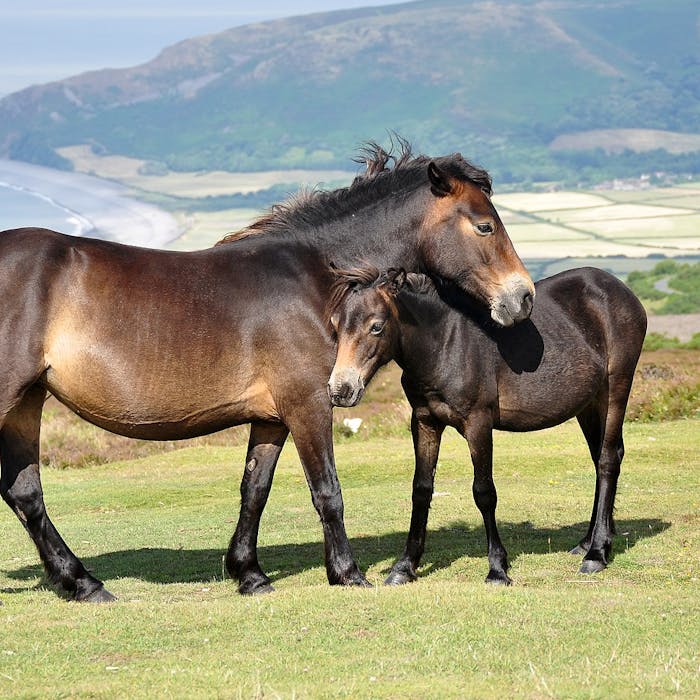
Exmoor pony
The Exmoor pony is the oldest native pony breed in Britain. There are approximately 3,500 of these ponies worldwide, of which around 350 still live free on Exmoor on the Somerset, Devon border.
Written records of ponies on Exmoor start with the Domesday Book in 1086.
After centuries of being a “Royal Forest” (not an area of trees but a hunting ground), most of Exmoor was sold in 1818. Thirty ponies, identified as the original old type, were saved and relocated to neighbouring moorland. These ponies form the foundation bloodstock of today's Exmoor population.
The breed nearly became extinct during the Second World War owing to ponies being stolen for the wartime meat market and a few being used for target practice by soldiers. After the war a small group of breeders worked to save the Exmoor, and during the 1950s ponies began to be exported to continental Europe and to Canada in small numbers.
Despite their popularity with riders, and dispersal around the world, the Exmoor pony is still considered endangered as the breeding population is largely confined to the small herds on Exmoor.
However, the ponies can do well when they have the chance. In January 2015, fourteen Exmoor ponies, from breeders within Exmoor National Park were exported to the Czech Republic's former military base of Milovice, to improve biodiversity by conservation grazing. According to the annual count of 2019, this population has increased to 111 ponies!
The Exmoor pony coat colour is predominantly a variant of dark bay, called "brown". The Exmoor pony is strong for its height, and noted for its hardiness and endurance.
Although they roam freely on the moor, all the ponies belong to someone.
Foals are born in the spring and early summer and spend the summer running with their mothers, known as dams, and building up a store of fat to take them through the hard winter ahead.
In the autumn the herds are driven down to the farms, to be inspected and micro-chipped. Foals are weaned and either sold or returned to the moor for the winter.
Further reading
Links to external websites are not maintained by Bite Sized Britain. They are provided to give users access to additional information. Bite Sized Britain is not responsible for the content of these external websites.
